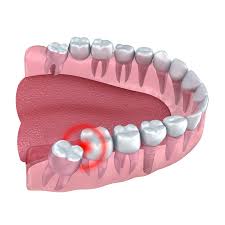
Introduction:
Wisdom tooth removal is a common dental procedure that many individuals undergo during their late teens or early twenties. These third molars, also known as wisdom teeth, often cause problems due to their late eruption and potential for misalignment. In this blog post, we will delve into the details of wisdom tooth removal, including the reasons for removal, the procedure itself, recovery tips, and potential complications.
- Why Wisdom Tooth Removal is Necessary:
- Late Eruption: Wisdom teeth usually start to emerge between the ages of 17 and 25, when other teeth have already settled into the mouth. This can lead to limited space for the wisdom teeth to grow, causing pain and misalignment.
- Impacted Teeth: Wisdom teeth are notorious for becoming impacted, meaning they don’t fully emerge from the gum line. This can result in pain, infection, and damage to neighboring teeth.
- Misalignment: Due to lack of space, wisdom teeth often grow at odd angles, potentially damaging nearby teeth and causing crowding.
- Oral Hygiene Challenges: The location of wisdom teeth at the back of the mouth can make them difficult to clean properly, leading to an increased risk of cavities and gum disease.
- The Wisdom Tooth Removal Procedure:
- Consultation: Your dentist or oral surgeon will evaluate your oral health, take X-rays, and discuss the need for removal. They will also discuss the type of anesthesia or sedation to be used during the procedure.
- Local Anesthesia: For simple cases, local anesthesia is administered to numb the area around the tooth. For more complex cases or multiple extractions, general anesthesia might be recommended.
- Extraction: The dentist or oral surgeon will carefully extract the wisdom tooth. Depending on the tooth’s position, they might need to make an incision in the gum to access the tooth.
- Stitching: In some cases, stitches might be required to close the incision. These stitches are usually dissolvable and don’t need to be removed.
- Recovery Room: After the procedure, you will spend some time in the recovery room until the anesthesia wears off. A friend or family member should drive you home.
- Recovery and Aftercare:
- Pain Management: Some discomfort and swelling are normal after the procedure. Your dentist might prescribe pain relievers and recommend cold packs to reduce swelling.
- Soft Diet: Stick to soft foods for the first few days to avoid putting excessive pressure on the healing area.
- Oral Hygiene: Gently rinse your mouth with warm salt water a few times a day to keep the area clean. Avoid brushing around the extraction site for the first day.
- Avoid Certain Activities: During the initial recovery period, avoid strenuous physical activities and refrain from using straws, as they can dislodge blood clots and hinder healing.
- Potential Complications:
- Dry Socket: This occurs when the blood clot that forms in the socket is dislodged, exposing the bone and nerves. It can be painful and requires dental care.
- Infection: Infections can develop in the extraction site. If you notice increasing pain, swelling, or fever, contact your dentist.
- Nerve Damage: In rare cases, nerves near the extraction site can be damaged, causing numbness or tingling in the mouth, lips, or tongue.

Conclusion: Wisdom tooth removal is a commonly performed dental procedure that can prevent a host of potential oral health problems. If you’re experiencing pain, discomfort, or notice signs of impacted wisdom teeth, it’s important to consult with a dentist or oral surgeon to determine the best course of action. Remember to follow your dentist’s aftercare instructions for a smooth and comfortable recovery.

